PUBLISHER: Amy Marson, C&T Publishing, Inc. AUTHOR: Michele Hill EDITOR: Anna Scott EDITORIAL ASSISTANTS: Marian Carpenter, Heidi Reid, Joy Peters GRAPHIC DESIGN: Lynton Grandison, Jenny James ILLUSTRATIONS: Jenny James PATTERN DESIGN: Jennie Victorsen PHOTOGRAPHY & STYLING: ADP ISBN: 978-1-57120-794-4  I dedicate this book to my wonderful husband Larry and to our beautiful daughters Emily and Sophie. Thank you for putting up with my obsession and especially Larry for being my best friend and colour adviser.
I dedicate this book to my wonderful husband Larry and to our beautiful daughters Emily and Sophie. Thank you for putting up with my obsession and especially Larry for being my best friend and colour adviser. 
 Introduction Everything made by mans hand has a form which must be either beautiful or ugly; beautiful if it is in accord with nature and helps her; ugly if it is discordant with nature, and thwarts her. It cannot be indifferent. William Morris William Morris was a weaver, illuminator, typographer, and designer of stained glass, tiles, furniture, tapestries and carpets. He formed the Society for the Protection of Ancient Buildings and was an environmentalist.
Introduction Everything made by mans hand has a form which must be either beautiful or ugly; beautiful if it is in accord with nature and helps her; ugly if it is discordant with nature, and thwarts her. It cannot be indifferent. William Morris William Morris was a weaver, illuminator, typographer, and designer of stained glass, tiles, furniture, tapestries and carpets. He formed the Society for the Protection of Ancient Buildings and was an environmentalist.
He explored medieval craftsmanship and revived techniques of dying, printing and weaving. Morris challenged mass produced mediocrity of the 19th century. With a commitment to socialist views he set out to improve working conditions for all. He rejected industrialisation and believed that work should be enjoyable and creative. His vision was for a future Britain where harmony with nature, art, morality and peace would rule. He was also instrumental in re-establishing the value of handcrafted work through improving the status and self-respect of the textile designer, printer and weaver.
He inspired an entire generation of designers and architects in the field of the applied arts, insisting on integrating life with art, and art with life. Over 100 years later William Morris continues to influence craftspeople and fabric designers. I first admired the designs of Morris when I visited the Victoria & Albert Museum in London in 1997. I sensed a familiarity with his interpretation of flowers and leaves and over time have come to admire his philosophy and ideals on life.  William Morris, portrait 1875
William Morris, portrait 1875  On my return home to Adelaide that same year, I discovered that we have a strong connection to Morris and that our very own Art Gallery of South Australia has one of the biggest collections of original Morris works outside of Britain. MICHELE William Morris If you want a golden rule that will fit everything, this is it: Have nothing in your houses that you do not know to be useful or believe to be beautiful. William Morris 1834 - 1896 William Morris was born in Essex on 24th March 1834.
On my return home to Adelaide that same year, I discovered that we have a strong connection to Morris and that our very own Art Gallery of South Australia has one of the biggest collections of original Morris works outside of Britain. MICHELE William Morris If you want a golden rule that will fit everything, this is it: Have nothing in your houses that you do not know to be useful or believe to be beautiful. William Morris 1834 - 1896 William Morris was born in Essex on 24th March 1834.
He was the third of nine children to parents William and Emma. Morris father was a partner in a successful and prosperous firm of city financiers and brokers. A comfortable salary allowed the family the opportunity of moving to a grander home, Woodford Hall in 1840 when Morris was six years old. This Georgian residence was on the edge of Epping Forest where Morris spent many hours playing. Morris first biographer recorded that he was a precocious child who was reading Sir Walter Scotts novels at the age of four. He was given his own garden, which was sure to be the catalyst for a lifelong interest in botany and horticulture.
Morris early schooling was at Preparatory School Walthamstow. He then moved on to Marlborough College, one of the new public schools that proliferated in the mid nineteenth century. Morris wrote in a letter in 1883 that Marlborough was: a very rough school. As far as my school instruction went, I think I may fairly say I learned next to nothing there, for indeed next to nothing was taught; but the place is in very beautiful country, thickly scattered over with prehistoric monuments, and I set myself eagerly to studying there and everything else that had any history in it, and so perhaps learnt a good deal. Morris entered Oxford University in 1853 and it was here that he met Edward Burne-Jones (1833 - 1898), who was to become a life-long friend and business partner. Morris and Burne-Jones expected Oxford to fulfill their religious career plans but found only apathy and indifference. They abandoned their plans to enter the church in 1855 and turned to examining medieval illuminated manuscripts.
Together they became increasingly interested in art and developed an admiration for the Middle Ages. Morris left university with a pass degree and became an apprentice to the Gothic revival architect, George Edmund Street (1824 - 1881). He began work in January 1856, staying only nine months. During this time he was to copy a detailed drawing of the doorway of Saint Augustines, Canterbury. He found this tedious but it evidently influenced Morris with the view of architecture as the most important of the visual arts. Streets chief assistant was Philip Webb (1831 - 1915), who was to become Morris own architect and co-worker in the Society for the Protection of Ancient Buildings.
Morris artistic pursuits began with modelling in clay, carving in wood and stone and illuminating books. Morris was also part of a group of young artists that included Burne-Jones and painter Dante Gabriel Rossetti (1828 - 1882), who painted a series of murals on Arthurian subjects in the Oxford Union Societies Debating Hall, now the Oxford Library. The Oxford mural was an amateur undertaking, embraced with much enthusiasm and commitment without any payment. The designing of the murals required models and Rossetti noticed a 17year-old girl Jane Burden, who typified the Pre-Raphaelite ideals of female beauty, with dark wavy hair, soulful eyes and attenuated pallor. She was pursued to model, and it was her beauty that captured Morris admiration. H. H.
Dearle, designer, Britain, 1860 - 1932 Jeffrey & Company, printer, Britain, 1836 - 1930 Celandine wallpaper c.1900, London, colour woodcut on paper 116 x 58.5cm, Ellen Christensen Bequest Fund 2002 Art Gallery of South Australia, Adelaide The daughter of a stable hand, she became the love of Morris life. They married in 1859 and had two daughters, Jane Alice Jenny and Mary May. May was the only daughter to marry, the marriage only lasting four years. A talented embroiderer and designer herself, she took a keen interest in her fathers business and became the director of the embroidery department at the age of 23. She continued this right up to the 1930s. Morris found it difficult to find suitable ready-made furniture when decorating his home, Red House.
As a result he set about bringing together people skilled in the decorative arts, including his friends Burne-Jones, Rossetti and Phillip Webb and in January 1861 opened the business that was to become Morris & Co. Jointly they began to produce and sell painted furniture, stained glass and decorative tiles. Morris & Co. often referred to as The Firm had its first public display at the International Exhibition at South Kensington in 1862. Morris stained glass was particularly well received, resulting in a number of commissions. As The Firms reputation grew, interior decorating commissions became a substantial part of its services, often involving entire interior design make-overs.
One major commission in 1880 was to decorate St James Palace, London. The silk
Next page
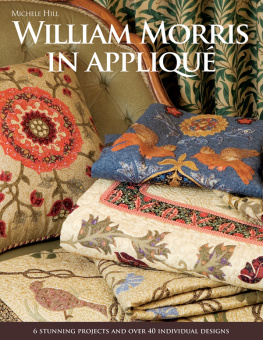
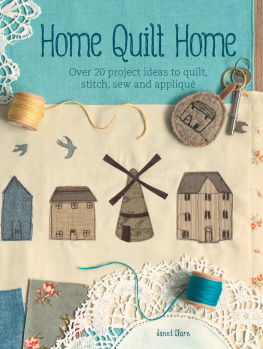
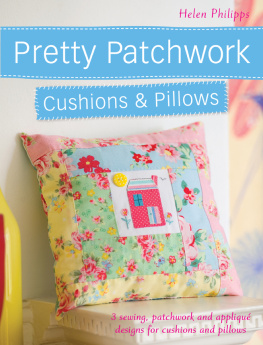
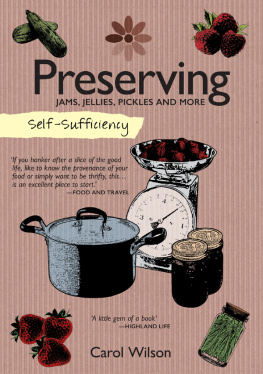




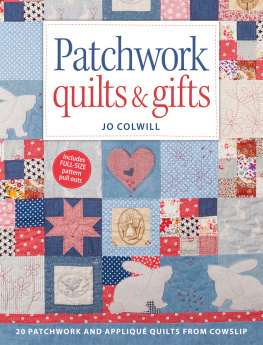

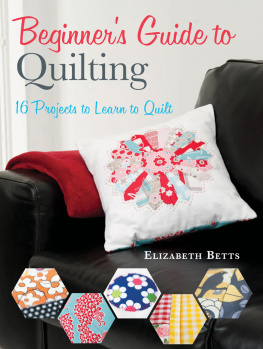
 I dedicate this book to my wonderful husband Larry and to our beautiful daughters Emily and Sophie. Thank you for putting up with my obsession and especially Larry for being my best friend and colour adviser.
I dedicate this book to my wonderful husband Larry and to our beautiful daughters Emily and Sophie. Thank you for putting up with my obsession and especially Larry for being my best friend and colour adviser. 
 Introduction Everything made by mans hand has a form which must be either beautiful or ugly; beautiful if it is in accord with nature and helps her; ugly if it is discordant with nature, and thwarts her. It cannot be indifferent. William Morris William Morris was a weaver, illuminator, typographer, and designer of stained glass, tiles, furniture, tapestries and carpets. He formed the Society for the Protection of Ancient Buildings and was an environmentalist.
Introduction Everything made by mans hand has a form which must be either beautiful or ugly; beautiful if it is in accord with nature and helps her; ugly if it is discordant with nature, and thwarts her. It cannot be indifferent. William Morris William Morris was a weaver, illuminator, typographer, and designer of stained glass, tiles, furniture, tapestries and carpets. He formed the Society for the Protection of Ancient Buildings and was an environmentalist. William Morris, portrait 1875
William Morris, portrait 1875  On my return home to Adelaide that same year, I discovered that we have a strong connection to Morris and that our very own Art Gallery of South Australia has one of the biggest collections of original Morris works outside of Britain. MICHELE William Morris If you want a golden rule that will fit everything, this is it: Have nothing in your houses that you do not know to be useful or believe to be beautiful. William Morris 1834 - 1896 William Morris was born in Essex on 24th March 1834.
On my return home to Adelaide that same year, I discovered that we have a strong connection to Morris and that our very own Art Gallery of South Australia has one of the biggest collections of original Morris works outside of Britain. MICHELE William Morris If you want a golden rule that will fit everything, this is it: Have nothing in your houses that you do not know to be useful or believe to be beautiful. William Morris 1834 - 1896 William Morris was born in Essex on 24th March 1834.